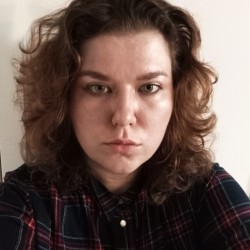Love, war, and mustaches: If you had to read one Polish book – make it the Trilogy

Editor

Photo: Freepik
related articles
related offers
“Trylogia” – 3 for a price of 1
If you’re only going to read one Polish literary work in your lifetime, it better be Henryk Sienkiewicz’s Trylogia.
Yes, so it’s kind of cheating, as it’s technically three novels.
But why settle for a single epic when you can get a trilogy packed with duels, doomed romances, and the kind of stirring patriotism that makes you want to wave a saber?
Published between 1884 and 1888 – in the time when Poland wasn’t even on the map, torn apart by the neighboring nations – the trilogy was more than just historical fiction. It was a defiant love letter to a missing country, disguised as an action-packed melodrama. Through Ogniem i mieczem (With Fire and Sword), Potop (The Deluge), and Pan Wołodyjowski (Fire in the Steppe), Sienkiewicz gave Poland back its past – one swordfight at a time
Same plot, different costume?
Now, let’s address the (war) elephant in the room: the plot, shall we say... repeats itself. It’s Polish version of Groundhog Day, just with more mustaches and fewer marmots.
In all three books, we always get the following drama:
- A noble Polish officer meets a beautiful maiden.
- Just as sparks fly, war breaks out.
- The lady gets snatched away, usually by a romantic rival, who also happens to be the enemy (rude!)
- Hero must choose: rescue her or save the country.
- Spoiler: he always picks Poland. And somehow, miraculously, gets the girl too.
Each time, it’s like watching a beloved rom-com – if the rom was constantly interrupted by cannons and the com involved dramatically reciting vows to your nation before dueling a traitor at dawn.
What is the grand plot of the Trilogy?
But what is the overall plot of each epic book? Let’s break it down:
With Fire and Sword (Ogniem i mieczem, 1884)
Jan Skrzetuski, honorable officer and master of the dramatic pause, falls for Helena. But oh no – Cossack heartthrob and part-time maniac Bohun kidnaps her. Meanwhile, Cossack armies rise, and Polish nobles must defend the fortress at Zbaraż.
Fun Fact: If you ever find yourself watching the 1999 Polish adaptation of Ogniem i Mieczem, keep an eye out – you might just stumble into a mini Witcher multiverse. Michał Żebrowski, Polish actor who heroically swings swords as Jan Skrzetuski, later traded his hussar armor for white hair and a brooding stare as Geralt of Rivia in the so-bad-it’s-kinda-magical 2002 Polish TV series The Hexer. Meanwhile, the charismatic villain Bohun? His voice might sound oddly familiar – Jacek Rozenek, who voiced him, went on to voice Geralt in the actual beloved adaptation: CD Projekt Red’s The Witcher 3: Wild Hunt. Coincidence? Or sword sort of destiny?
The Deluge (Potop, 1886)
This one is my personal favorite!
Enter hot-headed Andrzej Kmicic – a nobleman with a remarkable gift for offending nearly everyone he meets. He courts the virtuous Oleńka Billewiczówna (aww), then promptly goes on a minor neighborly killing spree (eww), joins the invading Swedes (oops?), and eventually realizes he’s made a catastrophic mess of things. Cue a redemption arc so dramatic it involves cannon fire and a heroic stand at the Jasna Góra monastery – because nothing says “my bad” quite like artillery.
Meanwhile, Oleńka is kidnapped (naturally) by none other than his rival, Prince Bogusław – a villain as wicked as he is well-groomed. Think Leonardo DiCaprio as Louis XIV in The Man in the Iron Mask: all smug royal smirks and decadent flair, just with more saber-rattling and facial hair.
Fire in the Steppe (Pan Wołodyjowski, 1888)
Michał Wołodyjowski – small in stature, big on swordplay – is Poland’s answer to Attack on Titan's Levi Ackerman (they even share a similar haircut!). Throughout the trilogy, our tiny mustachioed badass falls in unrequited love... over and over again. His heart ultimately lands with the spirited Basia Jeziorkowska, a perfect match in both loyalty and enthusiasm for mild chaos.
Enter Azja Tuhajbejowicz: a Tatar prince, rival suitor, and walking red flag with a flair for horse archery and a deeply problematic kidnapping kink. As personal drama simmers, things escalate on the grander scale – the mighty Ottoman Empire looms, and the siege of Kamieniec Podolski draws near. Suddenly, it’s not just hearts on the line, but the fate of the country itself.
Honorable mention goes to: Onufry Zagłoba, the trilogy’s delightful comic relief – a Polish Falstaff with better quips and worse drinking habits.
Why did the Trilogy matter then?
Sienkiewicz wasn’t just writing for entertainment; in a way, he was writing for resurrection. In the 19th century, Poland had been wiped from maps, censored into silence, and politically erased. The Trylogia helped preserve a national identity in exile, turning fiction into spirit of resistance.
Critics at the time – including famed realist Bolesław Prus – accused the books of whitewashing history and indulging in heroic fantasy. But readers didn’t care. In fact, Trylogia became Poland’s literary security blanket – one embroidered with glory, grief, and gallantry. And a little bit of gore, I suppose.
Why you’ll still love it (despite the fainting heroines)
The Trilogy, in a nutshell, is like Game of Thrones with fewer dragons and The Notebook with more sword fights. It’s a sweeping tale of noble sacrifices, sharp-witted banter, and brotherhood so stirring you’ll find yourself longing to saddle up and join the charge.
Just bear in mind: in real life, you'd probably last about five minutes before dramatically perishing in your first battle scene. But hey, what a way to go!
Yes, the plot is predictable. Yes, the women are mostly plot devices with great cheekbones. And yes, the good guys usually win.
But honesty? That’s kind of the point. The Trilogy isn’t aiming for gritty realism – it’s a galloping national myth. A baroque fever dream where hope springs eternal, love always triumphs, and no moustache is left untwirled.
References:
Sienkiewicz, H. (1884–1888). Ogniem i mieczem, Potop, Pan Wołodyjowski.












